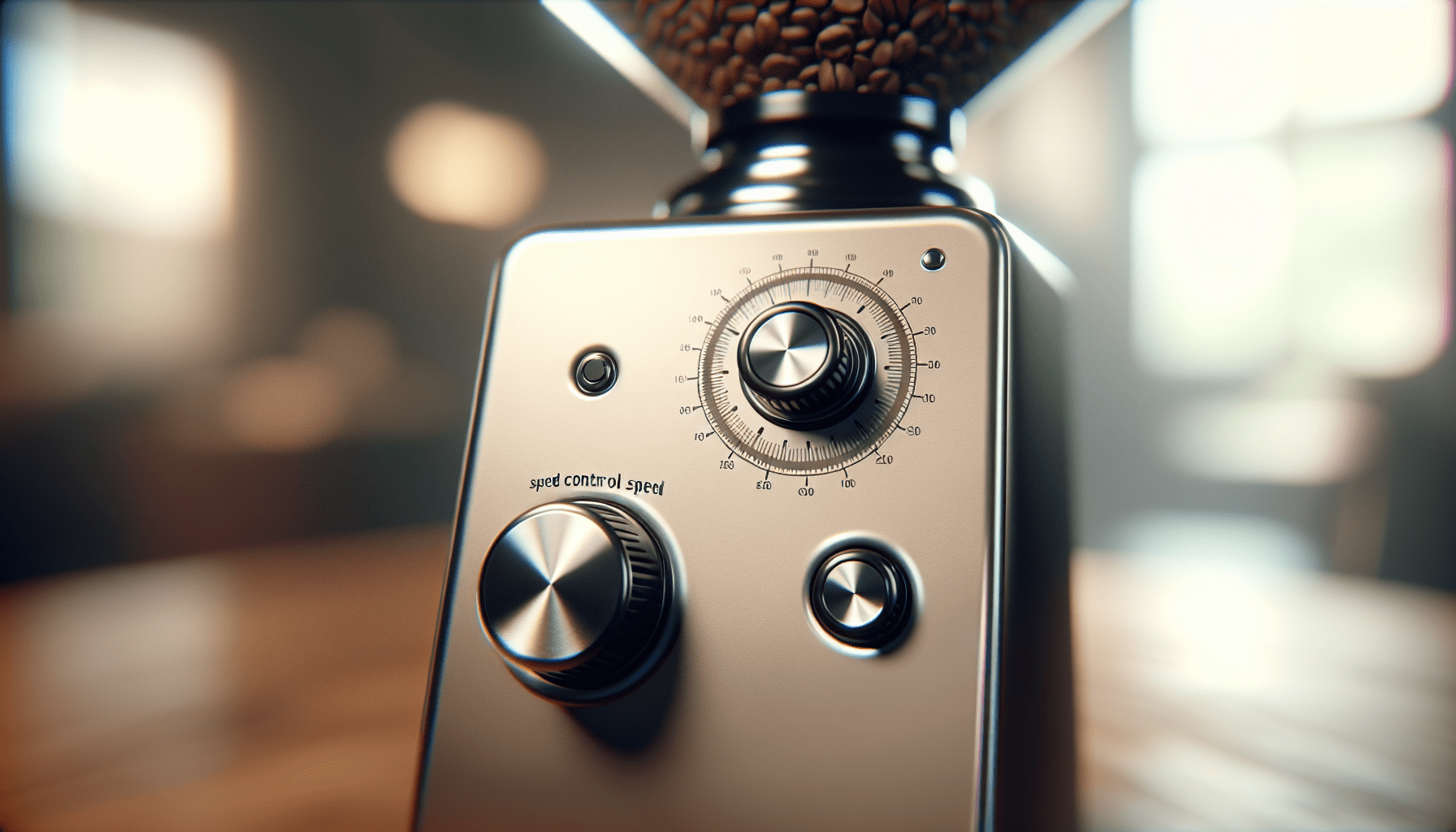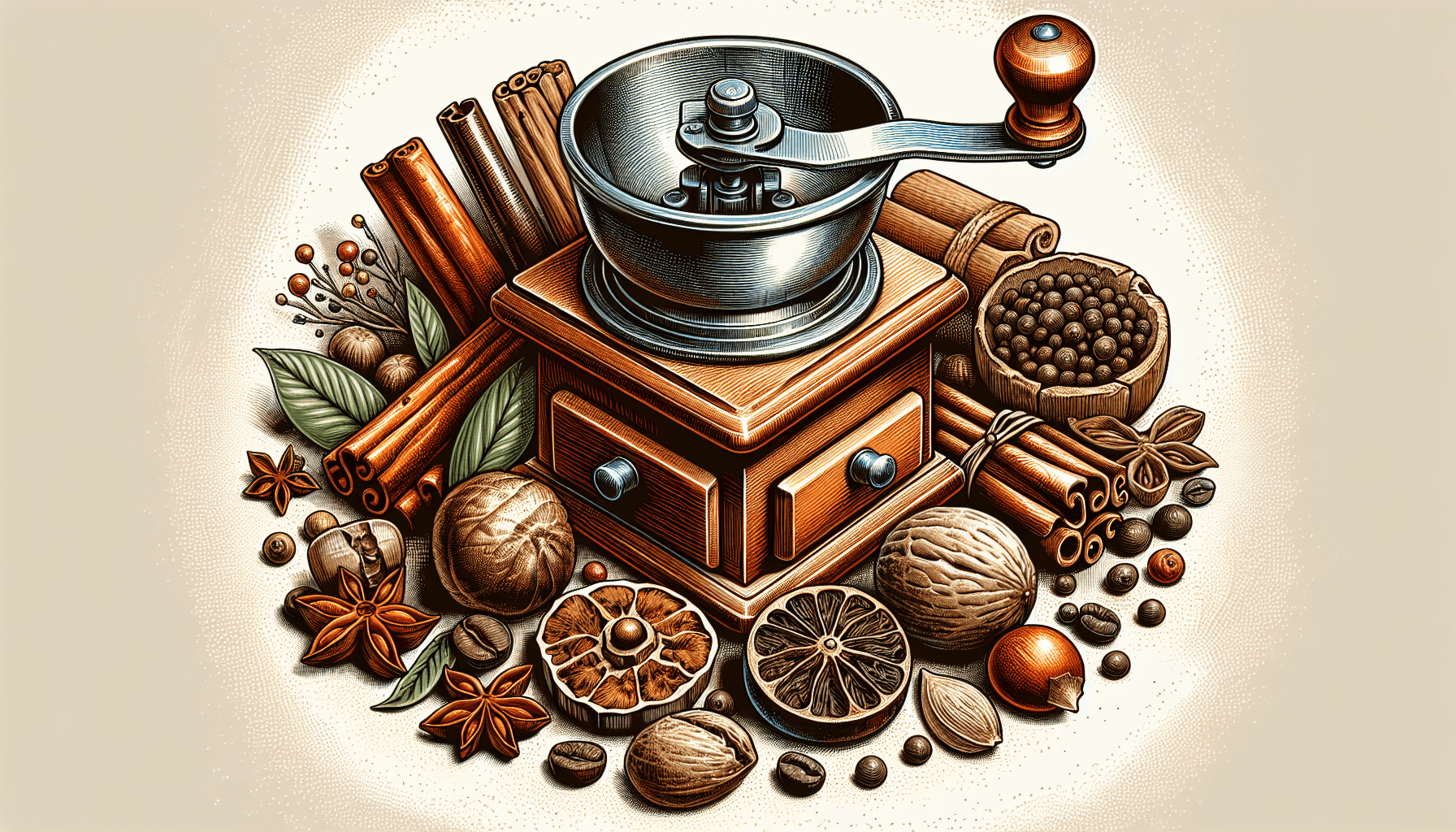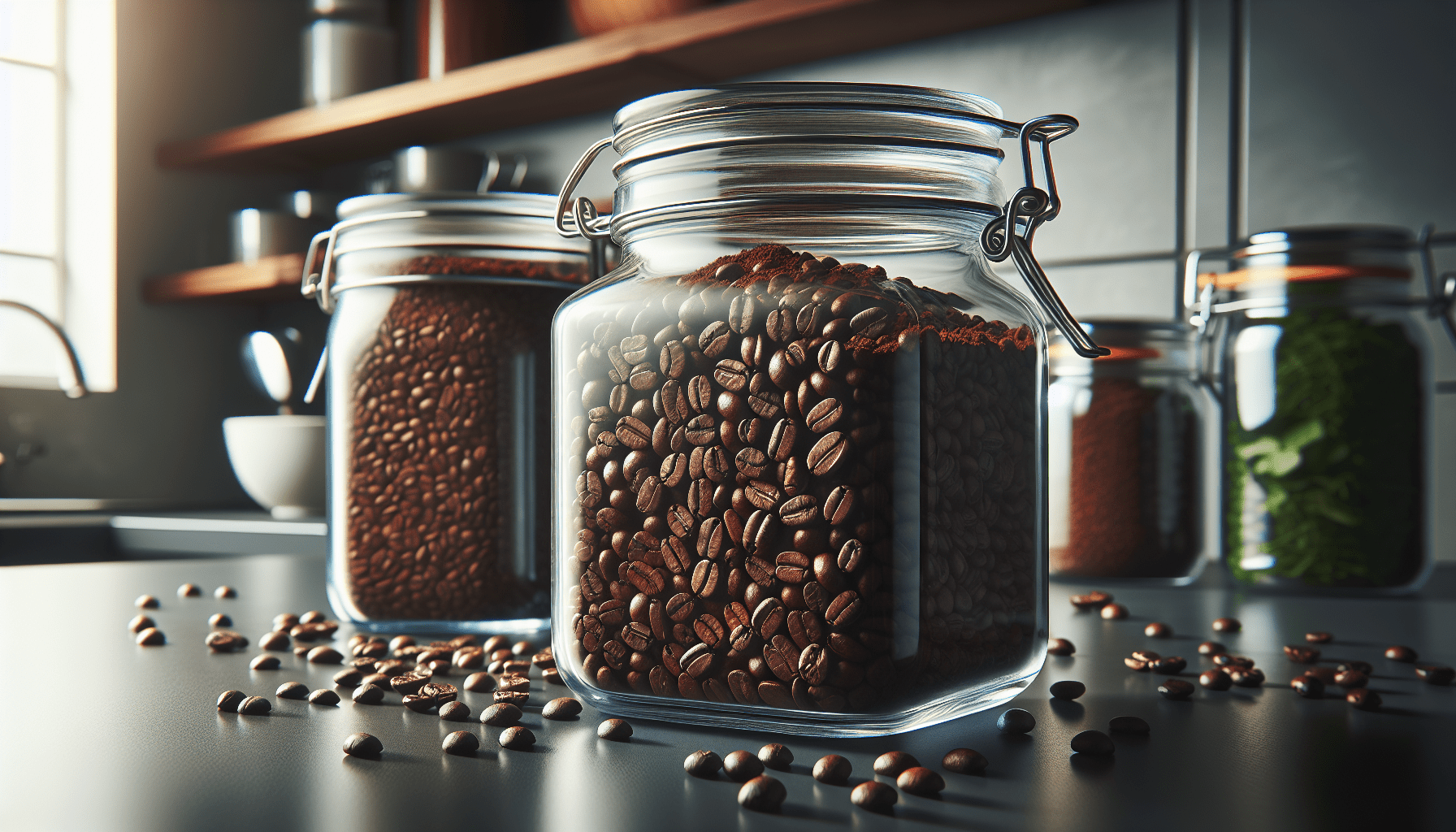Imagine waking up in the morning and craving the perfect cup of coffee to kickstart your day. But what if you could control not only the aroma and taste, but also the speed at which your coffee beans are ground? In this article, we explore the fascinating world of coffee grinders and answer the burning question: Can you adjust the speed of the grinding process on a coffee grinder machine? Get ready to discover how this small adjustment can make a big difference in your daily brewing experience.
Understanding the Grinding Process
Grinding coffee beans is an essential step in brewing that directly impacts the taste and quality of your cup of coffee. Understanding the grinding process is key to achieving the perfect grind consistency and unlocking the full potential of your coffee beans. In this article, we will explore the different types of coffee grinder machines, factors affecting grinding speed, the importance of speed control, and the benefits of adjusting grinding speed. So, grab your favorite cup of coffee and let’s dive in!
Grinding Basics
Before we delve into the specifics of speed control and different types of grinders, let’s start with the basics of grinding. The grinding process involves breaking down coffee beans into smaller particles, increasing the surface area for extraction during brewing. The result is a finer grind for espresso and a coarser grind for brewing methods like pour-over or French press. Achieving the right grind size is crucial for extracting the flavors and aromas locked within the coffee beans.
Importance of Speed Control
Speed control plays a significant role in the grinding process as it directly affects the grind size and consistency. Having the ability to adjust the grinding speed allows you to fine-tune the extraction process and achieve optimal results for different brewing methods. The speed at which the coffee grinder operates impacts the contact time between the coffee beans and the grinding mechanism, which ultimately affects the particle size distribution and extraction rate. Therefore, having control over the grinding speed empowers you to customize your coffee to your preferences.
Types of Coffee Grinder Machines
There are various types of coffee grinder machines available in the market, each offering different features and capabilities. Let’s explore three main types of coffee grinders: manual grinders, blade grinders, and burr grinders.
Manual Grinders
Manual grinders, as the name suggests, rely on manual effort to grind the coffee beans. They usually consist of a hand crank that rotates the burrs or blades to crush the beans. While they may require more physical effort, manual grinders offer a level of control and precision in grinding. They are often portable and can be a great option for coffee enthusiasts who value the process and enjoy a hands-on approach.
Blade Grinders
Blade grinders are the most common and affordable type of grinders. They employ a spinning blade that chops the coffee beans into smaller pieces. While blade grinders are convenient and easy to use, they often result in an inconsistent grind size. The length of time the blades operate determines the grind size, but it can be challenging to achieve consistency due to the lack of speed control.
Burr Grinders
Burr grinders are considered the gold standard when it comes to grinding coffee beans. They consist of two abrasive surfaces, known as burrs, that crush the coffee beans to a uniform size. Burr grinders offer greater precision, control, and consistency in grind size compared to blade grinders. They come in two main types: conical burrs and flat burrs, each with its own advantages. Burr grinders are preferred by coffee enthusiasts and professionals for their ability to produce a consistently high-quality grind.
Factors Affecting Grinding Speed
Several factors influence the grinding speed of your coffee grinder. Understanding these factors will allow you to make informed decisions when adjusting the speed for different brewing methods.
Motor Power
The motor power of your coffee grinder machine plays a significant role in determining the grinding speed. Higher-powered motors can rotate the burrs or blades at a faster speed, resulting in quicker grinding. However, it is important to note that grinding speed alone does not necessarily equate to better results. The appropriate motor power depends on the type of grinder and the brewing method you are using.
Grind Size
The desired grind size is another factor affecting grinding speed. Coarser grinds, such as those used for French press, require less time to achieve compared to finer grinds like espresso. Adjusting the grinding speed according to the desired grind size ensures that the beans are ground consistently and evenly. It is essential to refer to the grinder’s user manual for recommendations on the appropriate speed settings for different grind sizes.
Burr Quality
The quality of the burrs in a burr grinder also influences the grinding speed. High-quality burrs are designed to crush the coffee beans efficiently and precisely, resulting in faster and more consistent grinding. Investing in a grinder with superior burrs can significantly enhance the overall grinding experience and outcome.
Adjusting the Speed on Manual Grinders
Manual grinders offer a unique experience where the speed is controlled by your own arm strength and physical effort. Let’s explore two methods of adjusting the speed and potential challenges associated with manual grinders.
Using Arm Strength
When using a manual grinder, the speed at which you rotate the hand crank directly affects the grinding speed. By applying more force and spinning the crank faster, you can speed up the grinding process. Conversely, slowing down the rotation will result in a slower grinding speed. Adjusting the speed manually allows you to experiment and find the optimal grinding speed for your desired cup of coffee.
Consistency Challenges
One challenge with manual grinders is maintaining consistent grinding speed throughout the process. It can be challenging to keep a steady pace, which may lead to variations in grind size and extraction. Consistency in grinding speed is crucial for achieving uniform particle size distribution and ensuring an even extraction. Practice and experience can help overcome these challenges, allowing you to extract the best flavors from your coffee beans.
Speed Control in Blade Grinders
Blade grinders, unlike manual grinders, usually offer limited speed control options. Let’s explore two common types of blade grinders and how they allow for speed adjustments.
Single-Speed Blade Grinders
Many blade grinders operate at a single fixed speed. When using a single-speed blade grinder, the only control you have over the grinding speed is the duration of the grinding process. The longer you let the blades run, the finer the grind size will be. However, it is important to note that this method is not as precise as adjusting the speed on burr grinders.
Pulse Control for Variable Speed
Some blade grinders provide pulse control options that allow you to achieve a variable speed effect. By pulsing the grinder instead of letting it run continuously, you can have more control over the grinding process and prevent overheating of the coffee grounds. Pulse control enables you to adjust the grinding speed based on your preferences and brewing technique, offering some flexibility in the grinding process.
Variable Speed Options in Burr Grinders
Burr grinders, known for their precision and consistency, often offer more advanced speed control options. Let’s explore two common variable speed features in burr grinders.
Electronic Speed Control
Some burr grinders come equipped with electronic speed control options. These grinders allow you to adjust the grinding speed using a control panel or buttons. Electronic speed control offers precise adjustments, ensuring that you achieve the desired grind size consistently. This feature is especially useful when experimenting with different brewing methods that require specific grind sizes.
Stepless Grind Adjustment
Stepless grind adjustment is another variable speed option available in some burr grinders. With stepless adjustment, you have complete control over the grinding speed, allowing for fine-tuning to the exact grind size. This feature is highly desirable for coffee enthusiasts who want to have full control over every aspect of the grinding process. Stepless grind adjustment empowers you to dial in the perfect grind size for any brewing method, giving you the freedom to customize your coffee experience.
Benefits of Speed Adjustment
Adjusting the grinding speed on your coffee grinder machine offers several benefits that can enhance your coffee brewing experience. Let’s explore the advantages of speed control.
Consistency in Grind Size
By adjusting the grinding speed, you can achieve a consistent grind size throughout the entire batch. Consistency in grind size is crucial for a uniform particle size distribution, which in turn ensures an even extraction during brewing. When the particles are of similar size, they extract the flavors and aromas evenly, resulting in a balanced and full-bodied cup of coffee.
Enhanced Flavor Extraction
Controlling the speed of the grinding process enables you to optimize the extraction of flavors from the coffee beans. Different grinds require different extraction times, and adjusting the speed allows you to align the extraction time with the grind size. This customization optimizes the flavors and aromas extracted from the beans, resulting in a more flavorful and enjoyable cup of coffee.
Optimal Brew Results
Speed control plays a crucial role in achieving optimal brew results for different brewing methods. Each brewing method requires a specific grind size to achieve the desired taste and characteristics. By adjusting the speed and achieving the appropriate grind size, you can ensure that your coffee is perfectly suited for your preferred brewing method. This attention to detail and customization enhance the overall brewing experience and enable you to create consistently delicious coffee.
Guidelines for Adjusting Grinding Speed
While adjustable grinding speed offers flexibility and customization, it is essential to follow some guidelines for optimal results.
Experimenting with Speed Settings
Finding the right grinding speed is a process of experimentation and refinement. Start by following the manufacturer’s recommendations for general grind settings. From there, you can make slight adjustments, increasing or decreasing the speed, to achieve the desired grind size. It is important to keep in mind that different coffee beans, roast levels, and brewing methods may require slight modifications in grinding speed to achieve the best results. Make small changes and taste the results to find your personal sweet spot.
Considerations for Different Brewing Methods
Each brewing method has its own recommended grind size, which affects the extraction time and flavor profile. Consider the brewing method you will be using when adjusting the grinding speed. For example, brewing methods like espresso require a finer grind, which may necessitate a higher grinding speed. On the other hand, brewing methods like French press call for a coarse grind, which may require a slower grinding speed. Familiarize yourself with the recommended grind sizes for different brewing methods and adapt the speed accordingly.
Maintenance and Care
Proper maintenance and care of your coffee grinder is essential to ensure its longevity and consistent performance. Here are two important aspects of maintenance.
Cleaning the Grinder
Regular cleaning is crucial for maintaining the quality and performance of your coffee grinder. Coffee oils can accumulate over time, affecting the flavor of your coffee and potentially clogging the grinder. Refer to the manufacturer’s instructions for specific cleaning guidelines for your grinder model. It is generally recommended to disassemble the grinder periodically, clean all removable parts, and use a brush or cloth to remove any residue from the grinding chamber.
Checking Motor Performance
Monitoring the motor performance is important to ensure that your coffee grinder is operating optimally. If you notice any decline in grinding speed or unusual noises, it may indicate an issue with the motor. Contacting the manufacturer or a qualified technician for inspection and maintenance is advisable to address any motor-related problems promptly.
Conclusion
Adjusting the speed of the grinding process on your coffee grinder machine offers a world of possibilities for coffee enthusiasts. Whether you prefer manual grinders, blade grinders, or burr grinders, having control over the grinding speed empowers you to customize your coffee to perfection. By understanding the factors affecting grinding speed and following the guidelines for adjustment, you can achieve a consistent grind size, enhance flavor extraction, and ultimately brew the perfect cup of coffee. So, get ready to explore the world of grinding speed and unlock the full potential of your favorite coffee beans!




